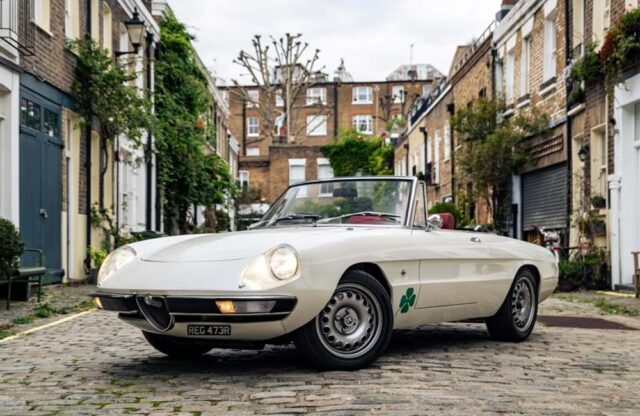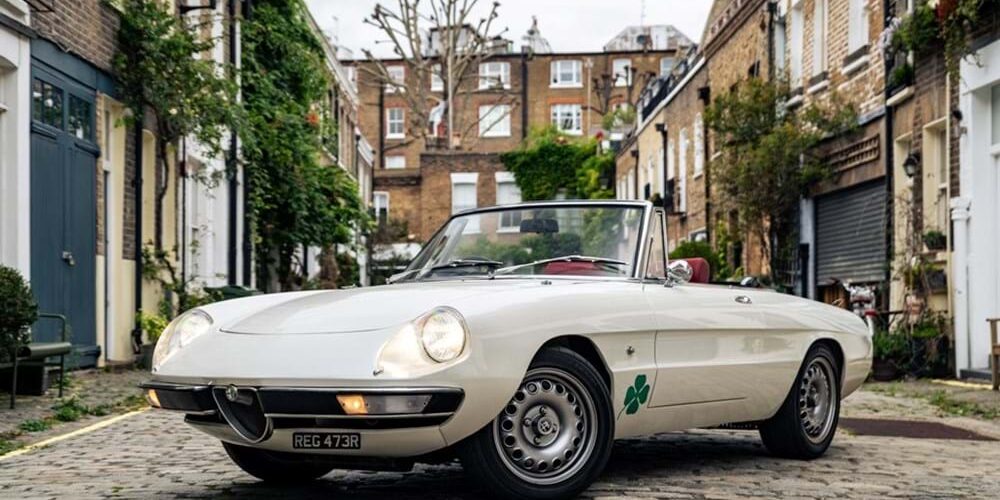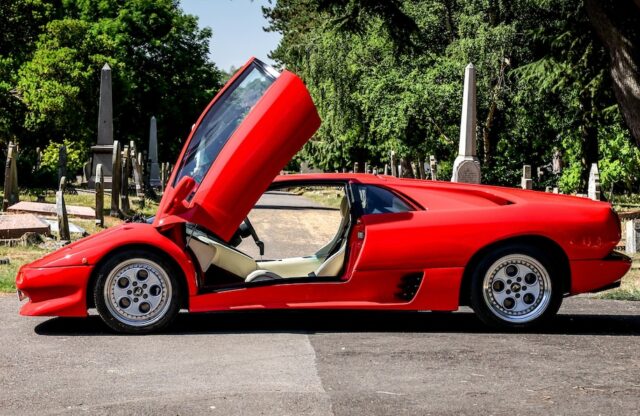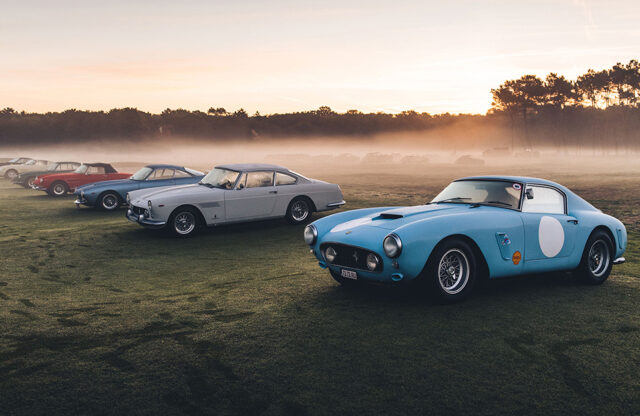WORDS: JOHN MAYHEAD | PHOTOS: HISTORICS
This weekend (see here for full analysis of the week’s sales), Historics Auctions sold a 1977 Alfa Romeo Spider for £136,560, more than four times the top ‘concours’ value in the Hagerty Price Guide. As you can imagine, it wasn’t an ordinary Spider. Stripped down to its bare bones by marque expert Alfaholics, it was built back up at a reported cost of over £300,000 (plus donor car) to be the ultimate track-focused S2 Spider. Then, the current vendor sent it back to Alfaholics to be ‘softened’ into the perfect fast-road example of the model, a further bill for £56,000 arriving soon afterwards.
On paper, the result is impressive. The old ‘Nord’ engine has been replaced by a later 2.0-litre twin-spark motor that has been fitted with bigger, billet and forged everything, MoTec throttle bodies provide the fuel mixture from a 55-litre, foam-filled tank that fills half of the boot. The suspension, drivetrain and brakes are all much bigger, lighter and more beautiful than before, and the body is stiffer, lower and generally smoother than when it came out of the factory.
The price was also impressive: this is the highest 105/115 series Spider public auction sale, and in the territory of a good 2600 Spider or an exceptional early Giulietta Spider Veloce.
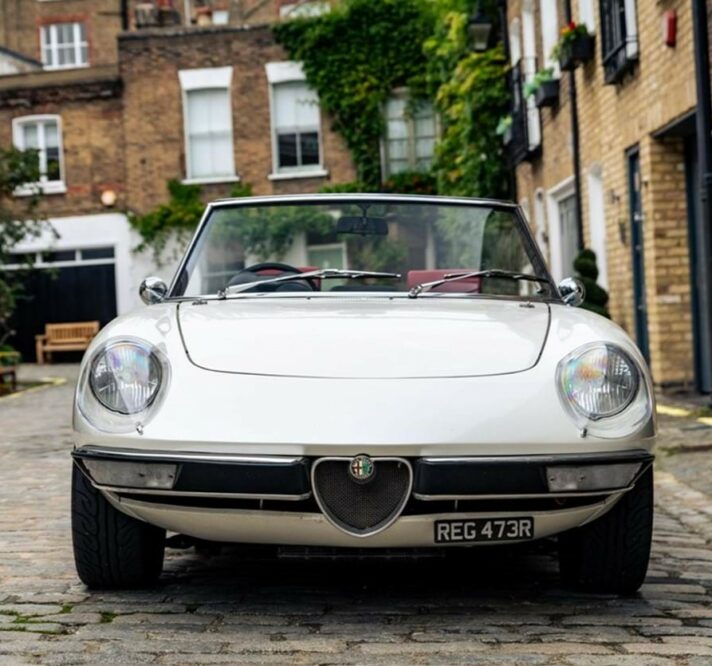
Cars that have been modified to the owner’s design tend to struggle to regain the cost of conversion when sold
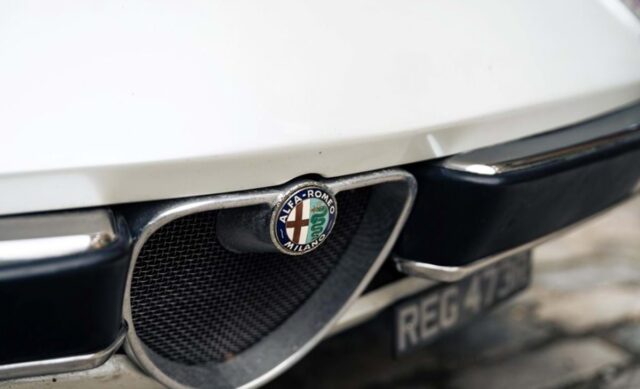
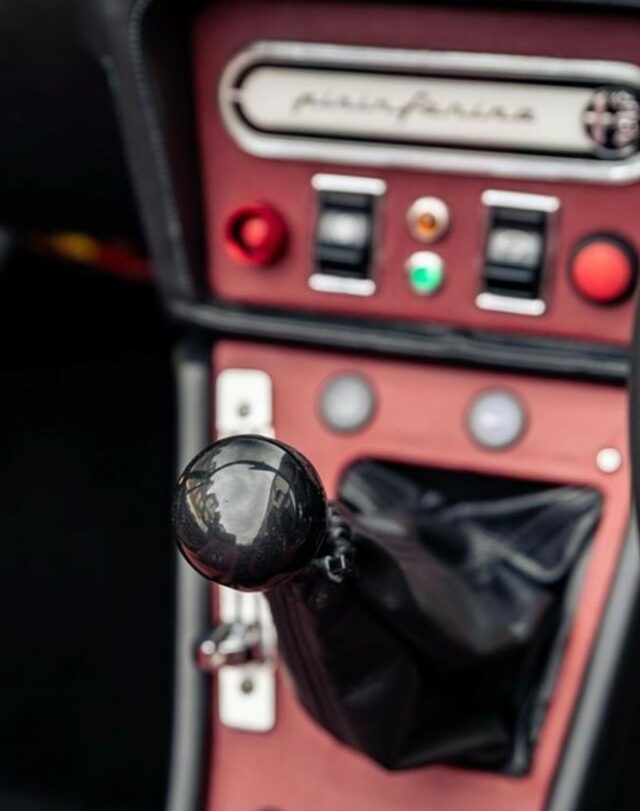
My own first-ever classic – which at the time was ‘just’ an old car – was an S2 Alfa Spider, and since then I’ve owned about a dozen of them. For me, they’re the best-looking of the 105/115 Series Spiders – purposeful, stylish and less fussy than the early ‘boat-tail’ models. I love the way the carburettors burble and pop on tickover but give a throaty roar under acceleration. I even like the interiors, fragile as they are, because they represent an ethos that invested in beauty and performance instead of weight and luxury.
But this Alfaholics one… I simply don’t like it. I don’t like the lack of a rear bumper and the screen that replaces the wonderful twin instrument binnacles on the dash, the fussy diamond-pattern leather interior or the alloy rims and low-profile tyres. I’m not knocking Alfaholics, as some of its other creations are fantastic, including another maroon Spider that had many of the same upgrades but kept the design of the original, both inside and out.

That’s the problem with valuing modified cars, however well it is done and however much it costs: people’s tastes can be very different. I’ve seen a lot of very competently modified cars ‘reimagined’ by some of the biggest names in the business, and although I’ve been blown away by the quality of engineering and design, there’s always a voice in my head that says if it was my car, I’d do it slightly differently. That is reflected in the resale price, should the person for whom the car is made decide to sell.
That said, there’s certainly a ranking system when it comes to value. Cars that have been modified to the owner’s design tend to struggle to regain the cost of conversion when sold. Engine ‘upgrades’ including replacing the original motor with a later or more powerful one, or the addition of turbos or superchargers, are difficult to justify today, especially when the DVLA seems to offer a very unpredictable response to such changes. For older cars, the importance of originality, especially as the industry transitions towards a more heritage-based ethos, can overcome any sense of ‘improvement’ when it comes to value. One-offs from very high-quality specialists such as Redux, Automobili Amos, Callum and Moto Technique hardly ever reach the open market, so values are very hard to judge.
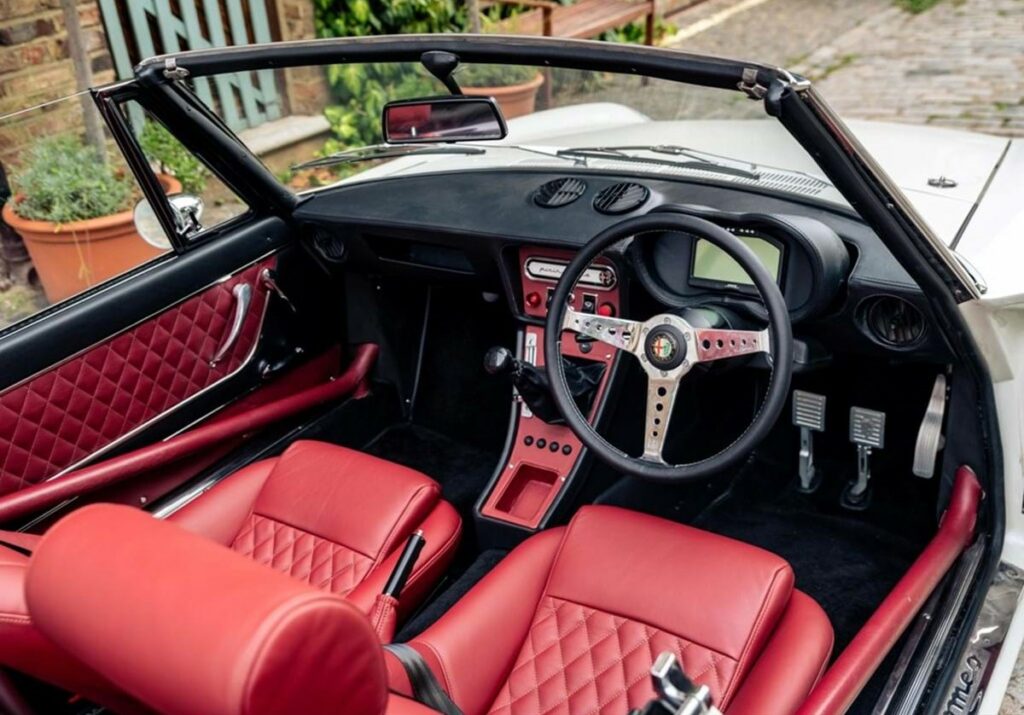
But at the top of the market, there are exceptions. Here, demand is so high that values can be not only maintained but also increased, often simply to avoid a waiting list that can be very hard to join and last for many years. Companies in this sector of the market also tend to have resale clauses with their clients to allow them to repurchase their cars, giving them control of resale values.
Singer is the best example of demand outstripping supply. A few of its ‘reimagined’ Porsche 911 studies have reached the open market with values from around £650,000 to £1 million. One, a delivery-mileage ‘Lautrec Commission’ car completed in May and sold last August in Monterey, made $1.4m (£1.1m), a flip that almost certainly made a lot of money for the vendor but is unlikely to have endeared them to Rob Dickinson and his team. Eagle E-Types is another example, although its control of the resale market is even tighter and values tend to remain very strong.
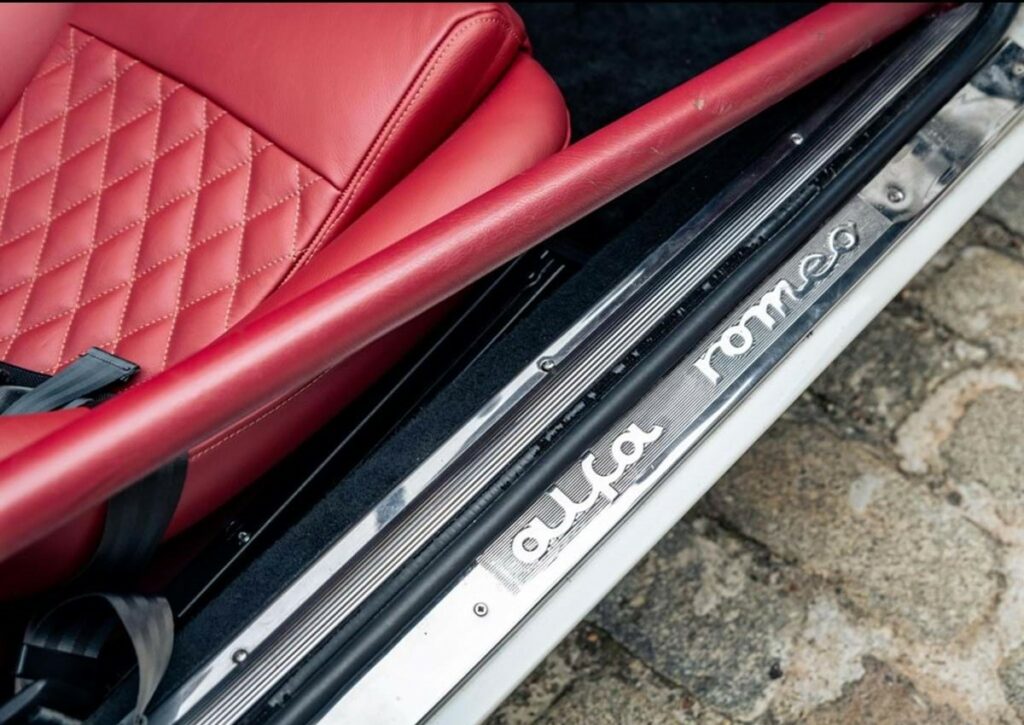
This particular Spider, although in an earlier track guise, was reported as sold by Collecting Cars for £75,000 in 2021, then appeared at the Classic Motor Hub for £125,000 in 2022. This weekend’s price was maybe one third of the total build cost, and that’s probably a realistic ‘return’ on something that is has a very individual feel to it and I believe was sold very well by Historics. The rest of the money – well, that’s the cost of the enjoyment that I hope the first owners gained from it, and hopefully money they consider well spent.
John Mayhead is Hagerty Price Guide editor and market commentator.
